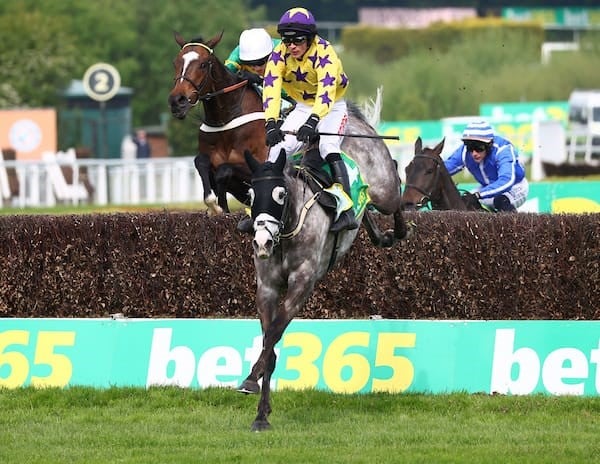Avontuur must be congratulated on putting on a truly magnificent day at Kenilworth last Saturday. Pippa Mickleburgh and her team did a sterling job in putting on a day which will be remembered by all fortunate enough to attend for a long time.
The race itself proved yet another thrilling contest, with imported Rumya getting the better of her local counterparts Hammie’s Hooker and Jet Aglow.
The 2010 Avontuur Estate Cape Fillies Guineas was largely made up of daughters of South Africa’s top sires. Three of the runners were by Trippi, four by Captain Al and three by Jet Master.
Rumya, who won Saturday’s main race, is the first import to win the prestigious classic since 2006 – when Aussie bred Sun Classique took first place in the Cape’s first G1 event of the new season.
Fuji Kiseki, an unbeaten son of legendary sire Sunday Silence, features in the pedigrees of both Rumya (broodmare sire) and Sun Classique (sire).
The unbeaten winner of the 2012 Avontuur Estate Cape Fillies Guineas is one of 15 G1 winners for her sire, Red Ransom.
Few stallions anywhere have compiled such a potent record globally speaking as the now deceased Red Ransom. His progeny have won at the highest level in all of Canada, Australia, Britain, Italy, Dubai, Germany and South Africa.
The son of Roberto is also an unusually versatile stallion. His progeny have won G1 races from 1200m (Red Clubs) to 2400m (Casual Look).
Red Ransom’s sons have come to the fore in recent times. His son, Intikhab, is not only sire of the great racemare, Snow Fairy, but is also the damsire of the 2010 Avontuur Estate Cape Fillies Guineas runner up, Igugu. Another son of Red Ransom, the ill-fated Red Clubs, is the sire of 2012 G1 winner and Breeders Cup contestant, Sky Lantern (Moyglare Stud Stakes).
The sire of Rumya is also becoming an important broodmare sire, and is the damsire of 2012 G1 winner, Termida – interestingly enough a daughter of Avontuur’s exciting sire acquisition, Oratorio.
Like 2011 Fillies Guineas victress Princess Victoria, Rumya is a descendant of 1972 Epsom Derby winner, and hugely influential sire, Roberto.
Since 2000, the Cape Fillies Guineas has played a huge role in determining Equus Awards honours. Last year’s winner, Princess Victoria, was subsequently named champion 3yo filly, as were Hoeberg (2000) and Sun Classique (2006). In 2010, Igugu (runner up to Ebony Flyer) not only took home the top 3yo filly award, but was also named Horse of the Year.
Two years earlier, Mother Russia ran second – and she was subsequently named Equus Champion Older Mare in 2010.
The Cape Fillies Guineas has also been won by a number of fillies, who have proved very competitive overseas – such as Perfect Promise, Captain’s Lover and Sun Classique.
It will be interesting to follow the progress of 2010 runner up, Igugu, during her Dubai campaign over the next few months.
Exceptions To The Rule
In horse racing, there are a number of theories which have proven to be flawed over time. For almost every so-called stead fast “rule”, horses have occurred which have proved this untrue. Here are some of the great examples of horses who proved an exceptional to the rules.
Older mares don’t breed top-class horses
While it is a proven fact, that younger mares are more likely to produce a good horse (and certainly a more commercially attractive yearling), there have been numerous older mares who have produced their best offspring towards the end of their breeding careers. One great example of this is Secretariat, who was foaled when his dam Somethingroyal was 18 years old.
Australasian champion, and sire of leading sire Lonhro, Octagonal was foaled when his famous dam, Eight Carat, was 17 years old.
An even better example is English Derby winner and champion sire, Bois Roussel, who was foaled when his dam, Plucky Liege, was 23 years old!
A top sire needs to come from a top sire “family”
This is a line which is best used in a stallion brochure, as there have been plenty of top-class stallions hailing from a family which has not produced a major stallion for generations. Two such notable examples are Danzig and Red Ransom, while Western Winter (South Africa’s best active sire by statistics) is another. Jet Master, the greatest sire ever bred in South Africa, is an even better example!
Only top-class racehorses do well as stallions
Over the years, there have been a few leading sires, which either never raced, or never won. The likes of Alibhai and Noble Bijou were both unraced and both excelled at stud in North America and New Zealand respectively, while in South Africa National Assembly (Danzig) is a great example of an unraced stallion making good, and another unraced horse, Judpot (A P Indy), has made a fine start to his stud career – with his first runner a winner. One of South Africa’s all time great broodmare sires, and former champion sire, Northern Guest, is another good example of an unraced horse making good at stud.
Top-class sires need to have performed well as 2yos
Many of the world’s best stallions have done well at the top level on the juvenile stage – but not all leading sires need to have. The world’s number one stallion, Galileo, made just one start at two, while another outstanding sire, Smart Strike, was not only unraced at two – but went on to sire two US champion 2yos in Lookin At Lucky and My Miss Aurelia. Fort Wood, one of South Africa’s top sires, and sire of leading stallion Dynasty, himself was unraced as a juvenile.
Sons of failed sires can’t succeed at stud
This is a rule which is does apply in more cases than not, but there have been a number of glaring exceptions. One of the best is the great stallion Vaguely Noble – who was by the stud failure, Vienna. He was one of the best stallions in living memory, and a top broodmare sire to boot.
Another example of a horse succeeding despite his sire, is the leading French sire, Linamix. Despite being a son of the very moderate Mendez, Linamix headed the French general sires list twice, and also became a superb broodmare sire.
One of the best examples of a son of a poor stallion surpassing expectations was Sharpen Up. By the truly moderate Atan, Sharpen Up was not only a leading sire, but became a great sire of sires, through sons Kris, Diesis, Sharpo, Trempolino, and Selkirk.
Clearly, as the saying goes, rules are made to be broke – and this is a rule which certainly holds true in the thoroughbred world.









